Now here’s a special kind of web site
October 5, 2010
Arachnophobes, you can skip this story.
For the rest of you, the Natural History Museum’s annual Spider Pavilion is set to open September 26. The six-week exhibition features hundreds of spiders inside the long greenhouse on the lawn outside the museum.
But when it comes to spider season, the museum knows no bounds—including your backyard. Once again, museum scientists are asking the public to participate in its “Spider Survey.”
The survey was launched in 2001 as one of the community science projects the museum uses to engage the public in gathering scientific information about Los Angeles’ ecosystem. Over the years, the museum has received 5,000 specimens from citizen entomologists, who’ve mailed or hand-delivered spiders they’ve found around their homes or schools.
 Along the way, a few rarities have been discovered, including the dangerous brown widow spider, which is native to South Africa but was first found locally by a survey participant in Torrance. Los Angeles is a hotspot for such exotic species, says entomology curator Brian Brown, because they sometimes hitch rides on cargo coming into L.A.’s ports.
Along the way, a few rarities have been discovered, including the dangerous brown widow spider, which is native to South Africa but was first found locally by a survey participant in Torrance. Los Angeles is a hotspot for such exotic species, says entomology curator Brian Brown, because they sometimes hitch rides on cargo coming into L.A.’s ports.
(If you’re new to the survey, click here for a how-to guide from the Natural History Museum.)
This year’s survey comes with a new request to spider hunters. Brown and his team are asking volunteers to create “pitfall traps” to capture “micro spiders” that have been overlooked in past surveys.
Although the museum plans to post detailed instructions on its website in the days ahead, the basic idea is to bury a plastic cup up to its lip and then pour in a little anti-freeze to immobilize unsuspecting itsy-bitsy spiders that fall inside—spiders that are nearly impossible to see, let alone capture by hand.
“It’s quite possible we can find some species that are new to science,” Brown says.
Beyond the potential of scoring new kinds of spiders, the goal of the survey and the pavilion is to teach visitors how beneficial and harmless these creatures actually are, according to the pavilion’s creator, Brent Karner, manager of invertebrate living collections, who’s popularly known as “Brent the Bug Guy.”
Dealing with human fears and mistaken beliefs about spiders is a big part of the project, Karner said. Inside the airy greenhouse-like pavilion visitors can get up close and personal with the giant wood spider from Malaysia, as well as two species of spiny-backed spiders from the Southeast U.S.
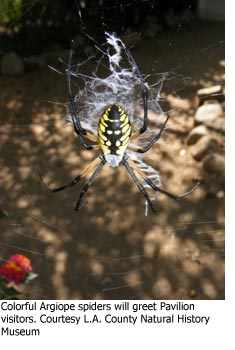 “I’m surprised at the number of people who say they have a very strong fear of spiders but who come anyway so they can work to overcome it,” says Karner, adding that full-blown arachnophobia is actually pretty rare. A mild to medium fear of spiders is common, with adults tending to be more scared than kids.
“I’m surprised at the number of people who say they have a very strong fear of spiders but who come anyway so they can work to overcome it,” says Karner, adding that full-blown arachnophobia is actually pretty rare. A mild to medium fear of spiders is common, with adults tending to be more scared than kids.
The Spider Pavilion is replacing the summer exhibit Butterfly Pavilion, a transition that represents a circle-of-life moment as the old tenants give way to the new.
“The butterflies are being eaten as we speak,” Karner said rather scientifically.
Tickets for the exhibition are included with museum admission. For those, who just want to see the pavilion, the rate is reduced—$3 for adults, $2 for seniors and students and $1 for children ages 5-12.
Posted 9/16/10
Zev on the need for greater food stamp outreach 9/29/10
September 30, 2010
Don’t run, walk—for a good cause
September 30, 2010
It’s less strenuous and easier on your knees than running, and walking can also help raise money for a couple of worthy causes in the next couple of weeks.
On Saturday, October 2, the National Alliance for Mental Illness will hold its Seventh Annual 5K (three-mile) NAMIWalks for the Mind of America event starting at the Santa Monica Third Street Promenade.
Check-in begins at 8 a.m. and, following opening ceremonies, the walk starts at 10:00 a.m. Several thousand are expected to take part in this fitness fundraiser to fight the stigma of mental illness, raise public awareness of the issue and support NAMI Signature Programs that are offered free to those in need.
Visit NAMI Los Angeles County Walk for all the particulars. And if you’re joining the effort a little late, not to worry—donations may be submitted online or mailed over the next two months.
Next, lace up your walking shoes for AIDS Walk LA on Sunday, October 17. This is the nation’s first and most successful charity walk to raise funds for public education and direct services to people with HIV/AIDS. From its modest beginnings in 1985, with some 4,500 participants raising $673,000, AIDS Walk LA has grown into an event that attracts nearly 25,000 walkers who raise several million dollars a year for HIV/AIDS-related services throughout the region.
This 10K (six-mile) walk begins and ends at West Hollywood Park, just across San Vicente Boulevard from the Pacific Design Center. Check-in opens at 8:30 a.m., the preliminaries and warm-up continue at 9:15 a.m., and walkers head out at 10:00 a.m. for their two-to-three-hour jaunt.
It’s fun, the free sponsored refreshments are great, and the cause is righteous. Visit the AIDS Walk LA home page for full details, and sign up online.
Posted 9/30/10
New law boosts child welfare database
September 30, 2010
 Los Angeles County’s child welfare officials won a key victory in Sacramento this week when Governor Arnold Schwarzenegger signed into law a bill expanding an important computer database used in child abuse investigations.
Los Angeles County’s child welfare officials won a key victory in Sacramento this week when Governor Arnold Schwarzenegger signed into law a bill expanding an important computer database used in child abuse investigations.
Assembly Bill 2322 improves the information available to county social workers in a computer database called the Family and Children’s Index (FCI), which provides child welfare workers with key medical, law enforcement and social services data as they launch investigations.
The bill, sponsored by Assemblyman Mike Feuer and speaker emeritus Karen Bass, allows L.A. County to include in the FCI database convictions for crimes against children by family members and others living with a child who have come to the attention of child welfare authorities.
Under the old system, social workers had to wait days or weeks to obtain information about convictions of family members and could learn nothing about convictions of non-family members.
The bill was sponsored by the county, and officials from the County Counsel and the Chief Executive Office were instrumental in crafting provisions to improve FCI.
The latest expansion follows news last week that the LAPD will become the first non-county agency to contribute data to FCI.
The new law takes effect immediately.
Post 9-30-10
Hunger fight goes on the road
September 30, 2010
Hunger, like homelessness, remains a national shame and an incredible stain on the richest society on earth. It seems inconceivable, but it is an indisputable fact that a rising number of our fellow citizens are going to bed hungry every night.
Food stamps are an important weapon in this battle, but we estimate that only about 50% of the people in Los Angeles County who are eligible are actually receiving this crucial assistance.
That’s why I was so encouraged to see the county rev up a new tool in the fight against hunger the other day. The Department of Public Social Services’ new mobile “Health and Nutrition Mobile Unit” is going to be hitting the streets, moving into our communities to find people who are eligible for food stamps and signing them up.
This 34-foot custom-made traveling office, fully equipped with computers, will be a rolling alternative to the status quo, in which food stamp applicants usually go to a county DPSS office, which unfortunately, for some, still carries a stigma. With this van, we can bring the mountain to Mohammed, so to speak.
But any successful innovation is about more than just equipment. This effort also will be tapping into the incredibly valuable human resources of our non-profit organizations—like the St. Joseph Center in Venice, where the van was unveiled, and the L.A. Jewish Federation, which since last fall has been running a “Fed Up With Hunger” campaign.
The nonprofits’ staff workers and volunteers will be on the front lines of this new outreach effort, identifying candidates for food stamps and assisting them with the time-consuming paperwork that is required on the front end. That way, when county workers show up in the van, they will be able to handle their end of the process more quickly and efficiently.
And reaching as many people as possible is the name of the game in these tough times.
Over the past year, we have seen demand at food pantries go up from 50% to 125%.
Yet many who should be receiving food stamps haven’t applied for them. Helping these individuals and families put nutritious food on the table will set up a win-win situation for all involved.
For one thing, these new clients (who, by the way, will be using electronic cards for their purchases, not stamps or vouchers) will be bringing business to our local supermarkets and grocery stores.
For another, they’ll be able to access an array of other services at the same time they sign up for food stamps—including mental health, housing and health care assistance.
We’ll essentially become a one-stop operation to help make life better for many of the folks who need a hand these days. And we’ll be doing it out in the neighborhoods where the need is greatest. So, as the old saying goes, let’s get this show on the road.
To hear Zev discuss the need to increase access to food stamps, watch the DPSS video below.

Posted 9/30/10
Community wins 405 bridge change
September 29, 2010
Neighborhood traffic concerns—and the potential for saving millions in construction costs—have prompted a radical rethinking of plans to bring down the Mulholland Bridge over the 405 Freeway.
Instead of demolishing and rebuilding the 1959 structure—one of three bridges targeted in the 405 Sepulveda Pass project—workers instead would construct an entirely new Mulholland overpass just south of the current bridge. Coming from the west, drivers would enter the new bridge in the same place they do now, then angle slightly south across the freeway before ending up on Skirball Center Drive. Only after the new span was completed would the old one come down, thus reducing traffic-related inconvenience during construction.
Adopting the new approach is “about 99% sure,” said Mike Barbour, who is heading up the project for the Metropolitan Transportation Authority. He estimates the new method would save between $4 million and $10 million, most of that due to a more straightforward, single-phase building process and a more streamlined approach to temporarily relocating utilities.
The impetus to take another look at the construction plan grew out of meetings this summer with community activists concerned about how dismantling and rebuilding the Mulholland Bridge would affect traffic in the area, home to many educational and religious institutions.
There was applause when the new approach was announced at a recent meeting of the project’s Community Advisory Committee. The group was convened to provide input on the $1.034 billion project, a partnership between Metro and Caltrans that will create a 10-mile northbound carpool lane on the 405, along with other improvements.
“This group of decision-makers is actually listening to the public,” said Richard H. Close, president of the Sherman Oaks Homeowners Association and a member of the advisory committee, who was not at the recent meeting but took part in an earlier session where community concerns about the Mulholland Bridge were discussed. “They’re willing to redesign and solve a problem. It’s a much more collaborative process with the MTA than with other agencies.”
“On other projects, we’ve been told, ‘we are the experts.’” That may be true from an engineering standpoint, he said, but people who live in the area have an invaluable perspective, too: “We know traffic flow.”
He said Metro’s decision to take another look “is somewhat historic, especially on a transportation project.”
Still, other community concerns linger, many relating to the bridge at Skirball Center Drive, where demolition work on the northern side of the structure is slated to begin on October 12. Project plans currently call for freeway on- and off-ramps to be redirected onto Sepulveda Boulevard, rather than directly onto the bridge, as they are now. Residents say they fear the change will create traffic problems on Sepulveda.
“There are a lot of issues with the Skirball Bridge,” said Laurie Kelson, an advisory committee member and chair of the Encino Neighborhood Council’s traffic and transportation committee. “Our community does not want the ramps moved.”
Barbour said those concerns are being reviewed and alternatives are being evaluated. But he said he doesn’t see “a win/win at this point” regarding the Skirball ramps, given what the community wants and what traffic engineers say is needed for improved traffic flow.
Some also have posed questions in recent days about what a new Mulholland Bridge would look like, said Ron Macias, a Metro community relations officer. A 2007 Caltrans assessment described the current structure as an historic example of transportation engineering that “exemplifies the minimalist or modernist aesthetics of the period.”
And there are those, like Louis Krokover, president of the Encino Neighborhood Council and a 3rd generation builder, who argue that the Skirball and Mulholland bridges don’t need to be replaced at all.
Officials on the project say that building a wider freeway requires rebuilding and modernizing the three bridges, which, in addition to Skirball and Mulholland, include the bridge at Sunset Boulevard, whose southern side has been demolished and is now being rebuilt.
Barbour said he hopes that construction on the new Mulholland Bridge will start in January, 2011, and take about 12 months to complete.
He’s currently in the process of negotiating the new plan with the project’s contractors and working out details with the Los Angeles Department of Transportation.
And he credits the community groups—which he acknowledged frequently get “blown off” in dealing with public agencies—with sending his staff back to the drawing board. That review helped determine that the project had the right of way to land on which to build the new Mulholland Bridge, which made rethinking the process possible.
“They pushed us,” Barbour said. “They asked us and we went back and looked at it.”
Posted 9/29/10
Cash infusion will let TB ward open
September 29, 2010
Supervisors on Tuesday approved $1.1 million to staff a new ward for patients with tuberculosis and other infectious diseases at Olive View-UCLA Medical Center, clearing the way for the facility to begin operating next year.
The supervisors’ decision to fund the unit came as a result of a motion by Supervisors Michael D. Antonovich and Zev Yaroslavsky. The money will be enough to staff the unit, set to open in March or April, for just half a year. Going forward, it will cost $2.2 million annually to staff the facility—less than was originally envisioned because of lower operating costs and more potential revenue from moving patients into the facility from other parts of the system. Even the reduced costs, down from $4.6 million originally estimated, will add to the department’s deficit but also will provide needed health care beds for infectious disease patients elsewhere in the overcrowded system.
“It does not make sense for this brand new building to sit empty [when] for a relatively small cost, it could be part of the solution to overcrowding in the hospitals and provide more appropriate care to these long-term patients,” the supervisors’ motion said.
Tuberculosis has been declining for years in Los Angeles County, but public health officials say it is important to remain vigilant. The new ward is seen as an important resource for treating some patients who require long-term hospitalization, including the homeless and those who live with small children and people with compromised immunized systems. The county lost its only dedicated tuberculosis ward when High Desert Hospital in Lancaster closed to inpatients in 2003.
The new Olive View facility also could be used to treat victims of a bioterrorism attack, and, on a more routine basis, for patients with infectious diseases other than tuberculosis. Such patients now often are confined to isolation rooms within intensive care units but could be relocated once the Olive View facility is up and running.
Carol Meyer, chief of operations for the Department of Health Services, said the decision to fund staffing for the new facility was a mixed bag: an added ongoing expense for an already financially-troubled system but, “from a patient perspective, it’s a positive.”
Posted 9/29/10
A sneak peek at great art
September 28, 2010
LACMA’s new Lynda and Stewart Resnick Exhibition Pavilion opens to the public this week. The three inaugural exhibits range from ancient to modern, colossal stone carvings to intricate beaded dresses. Images from a recent press preview for the 45,000 square foot gallery space, designed by Renzo Piano, capture the wide range of art under one expansively sky-lit roof.
Tickets for this weekend’s community weekend are free, but they are going fast. Check out LACMA’s website on Thursday to secure last minute tickets—or become a museum member and go anytime.
Posted 9-28-10
Book ‘em (online) Danno
September 28, 2010
Want to reserve a kayak at Castaic Lake or an RV hookup at Dockweiler Beach?
Starting this week, you can—with a click of the mouse.
A new online reservation system for selected county parks just went live, allowing residents to book—and make credit card payments for—a wide range of activities at selected parks and recreation areas, including picnic areas, swim lessons, and campsites and RV spots.
The reservations site starts with five facilities: Dockweiler Beach, Castaic Lake State Recreation Area, Arcadia County Park, Alondra Park in Lawndale and Charles S. Farnsworth Park in Altadena.
New facilities will be added over the next six months.
Using the new system, the public can track availability, book a reservation and pay by credit card. Booking availabilities at the various parks include basketball courts, picnic areas, meeting rooms, and even a space at Arcadia Park specifically suited for a dog show.
The new program has a simple-to-navigate site along with a lengthy name, the Los Angeles County Activity Registration and Reservation System, or LACARRS. It was developed jointly by the county Parks and Recreation, Beaches & Harbors and Internal Services Departments and the Chief Information Office.
Posted 9/28/10




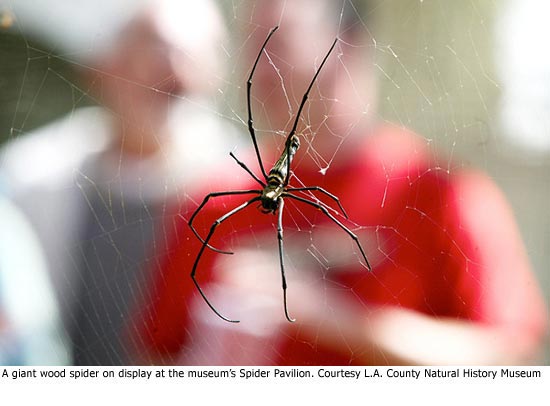
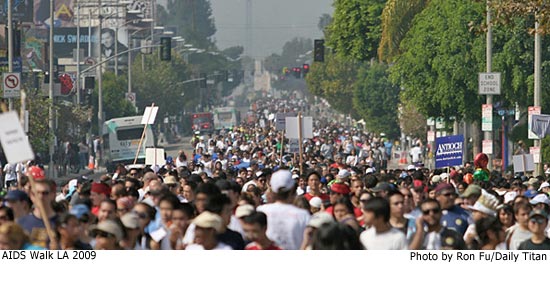
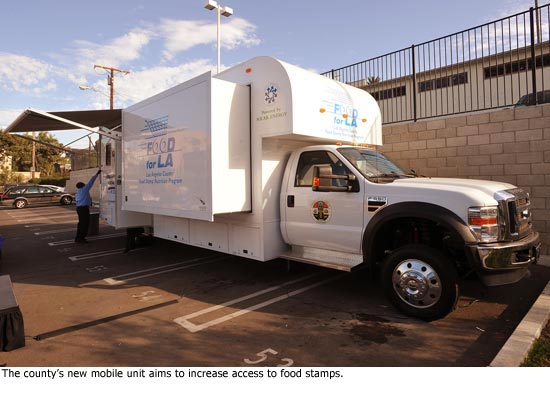
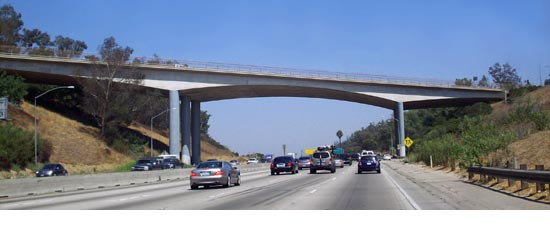
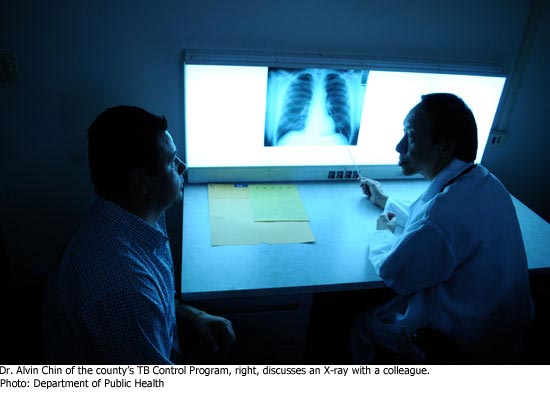
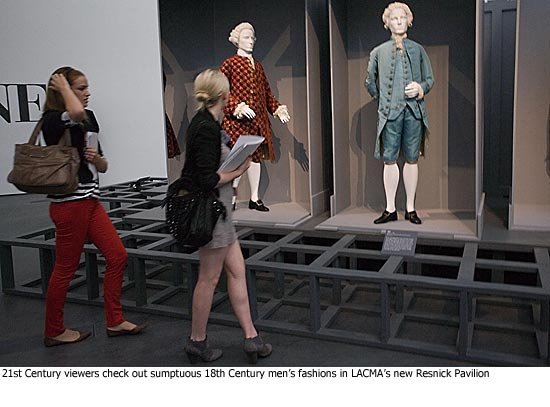










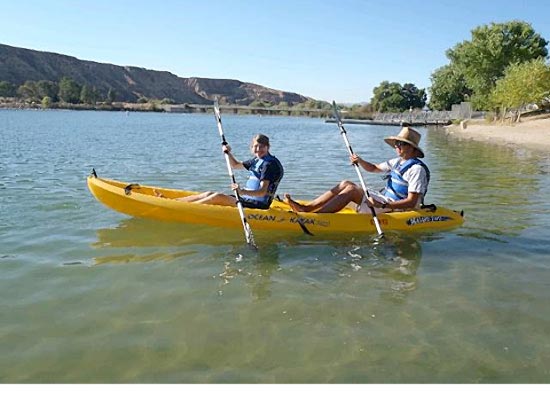





 Check for the latest closure information
Check for the latest closure information








